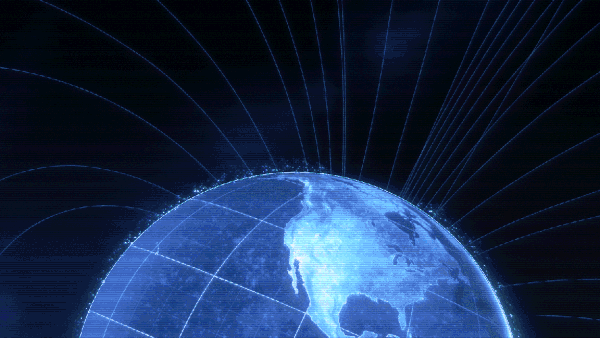
A long-sought invisible force wrapped around Earth has been detected more than half a century after it was first hypothesized.
The field, dubbed the "polar wind," explains how Earth's atmosphere escapes easily and rapidly above the north and south poles, and may have played a role in shaping our planet's thin upper atmosphere. Scientists say it's as vital to our planet as gravity and the magnetic field.
"This field is so fundamental to understanding the way our planet works — it's been here since the beginning alongside gravity and magnetism," Glyn Collinson, who is the principal investigator of Endurance at NASA's Goddard Space Flight Center in Maryland, said in an agency video. "Despite being weak, it's incredibly important — it counters gravity and it basically lifts the skies up."
The existence of the field was first hypothesized over 60 years ago. Indeed, several spacecraft flying over Earth's poles in the late 1960s detected a stream of particles from the atmosphere escaping into space at supersonic speeds. Scientists knew that sunlight caused particles from the atmosphere to leak into space "like steam evaporating from a pot of water," but the particles detected by these spacecraft showed no signs that they were heated.
"Something had to be drawing these particles out of the atmosphere," Collinson said in a NASA statement. But detecting the presence of field that drew the particles out, which is invisible and very weak — its fluctuations can only be sensed over hundreds of miles — was beyond the limits of technology at the time.
In 2016, Collinson and his collaborators began developing sensors for launch aboard the international Endurance sounding rocket mission, and in May 2022, one of the suborbital rockets equipped with eight specialized instruments launched from the Svalbard Rocket Range in Norway, just a few hundred miles from the North Pole. That location gave the rockets a perfect vantage point to study atmospheric unique phenomenon.
"Svalbard is the only rocket range in the world where you can fly through the polar wind and make the measurements we needed," study co-author Suzie Imber, a space physicist at the University of Leicester in the U.K., said in the statement.

During the 20-minute flight, Endurance reached an altitude of about 477 miles (768 kilometers) and collected data across a 322-mile (518-kilometer) portion of the atmosphere. It cataloged a fleeting 0.55 volt change, which is "almost nothing — it's only about as strong as a watch battery," said Collinson. "But that's just the right amount to explain the polar wind."
Scientists estimate the field begins roughly 150 miles (250 kilometers) above the surface, where atoms in the atmosphere separate into negatively charged electrons and positively charged ions, which are over 1,800 times heavier than electrons. Given their opposite electric charges, an electric field forms to "tether them together," countering gravity's incessant pull and letting some particles escape into space in the process, according to the NASA statement.
Hydrogen ions, which are abundant in the polar wind, sense an outward push from the field 10.6 times stronger than gravity, the researchers found. "That's more than enough to counter gravity — in fact, it's enough to launch them upwards into space at supersonic speeds," study co-author Alex Glocer, who is the project scientist of the Endurance mission at NASA Goddard, said in the statement.
Oxygen ions, which are heavier than their hydrogen counterparts, were found to be getting a speed boost from the polar wind as well. "It's like this conveyor belt, lifting the atmosphere up into space," Collison said.
Because polar wind is spurred by dynamics deep within Earth, scientists expect it to be present on other planets, including Venus and Mars. Studying the phenomenon in further detail can also reveal clues about its influence on the evolution of our atmosphere and its fingerprints in our oceans, Collinson said.
"This field is a fundamental part of the way Earth works, and now that we've finally measured it, we can start to ask some of these bigger and exciting questions."
Collinson and his colleagues describe their findings in a paper published Wednesday (Aug. 28) in the journal Nature.
Correction 9/3: Svalbard Rocket Range is in Norway, not Sweden.







